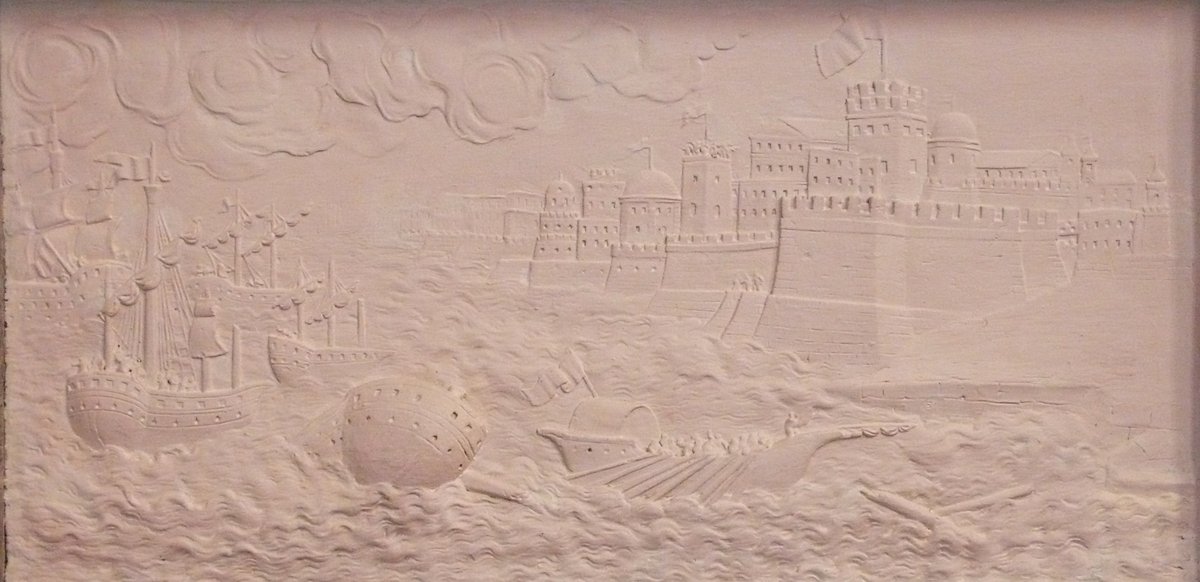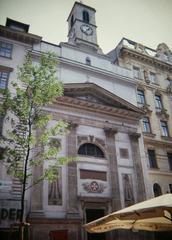
Maltese Church Vienna: Visiting Hours, Tickets, and Historical Guide
Date: 14/06/2025
Introduction
Nestled in Vienna’s historic Innere Stadt, the Maltese Church (Malteserkirche), officially the Church of St. John the Baptist, is a living testament to nearly 800 years of European religious, architectural, and cultural history. With free admission, accessible visiting hours, and a rich heritage tied to the Order of Malta, the church is both a serene sanctuary and a vibrant cultural venue. This comprehensive guide covers everything you need to plan your visit, from opening times and ticketing to architectural highlights, accessibility, and nearby attractions. (Maltese Church Vienna: Visiting Hours, Tickets, History & Nearby Attractions) (Maltese Church Vienna: Visiting Hours, Tickets, and Architectural Highlights) (Exploring the Maltese Church in Vienna: Visiting Hours, Tickets, and Historical Significance)
Historical Overview
Early Foundations and Medieval Origins
First recorded in 1217 as the “Haus der Prueder des Ordens von Sand Johannis” (House of the Brothers of the Order of Saint John), the Maltese Church’s origins are rooted in the work of the Knights Hospitaller. This priory, strategically placed along medieval Vienna’s military and pilgrimage routes (now Kärntnerstraße), soon evolved into a Gothic church in the mid-15th century. Notably, the church retains one of Vienna’s oldest preserved medieval timber roofs.
The Knights Hospitaller and Their Role
The Knights Hospitaller, later known as the Order of Malta, have played a pivotal role in Vienna’s religious and social fabric since the 13th century. Their mission of charity and care for the sick is reflected throughout the church, with the Maltese cross and dedications to St. John the Baptist.
Baroque and Empire Transformations
The 18th century brought Baroque refinement, including the high altar painting by Johann Georg Schmidt, while the 1806 Empire-style façade added Corinthian pilasters and a distinctive tower. Monuments such as the memorial for Grand Master Jean Parisot de La Valette underscore the church’s enduring legacy.
Modern Restorations
The 19th and 20th centuries saw further enhancements, including stained-glass windows and the construction of the Johanneshof commandery house. After financial difficulties and a brief sale in 1933, the Order regained the church in 1960, with ongoing preservation efforts ensuring its historical integrity.
Visiting the Maltese Church Vienna
Opening Hours
- Monday to Friday: 10:00 AM – 5:00 PM
- Saturday: 10:00 AM – 3:00 PM
- Sunday & Public Holidays: Closed
Hours may vary during services or special events; check the official website for updates.
Tickets and Admission
- General Admission: Free
- Donations: Welcomed to support maintenance and programming
Guided Tours
Guided tours offer deeper insights into the church’s history, architecture, and art. Advance booking is recommended via the church office or local tour operators.
Accessibility
The church is wheelchair accessible, with ramps and accessible restrooms. Visitors with specific needs are encouraged to contact the church in advance for arrangements.
Getting There
- By Subway: U1 & U3 to Stephansplatz, then a short walk
- By Tram: Lines 1, 2, D stop near Kärntnerstraße
Special Events and Cultural Activities
The Maltese Church is renowned for its acoustics and regularly hosts classical concerts, including trumpet and Baroque organ performances. These events provide a unique cultural experience amidst historic surroundings. For event schedules, consult the official church website or local listings.
Architectural and Artistic Highlights
Exterior
The Gothic façade, complemented by a 19th-century bell tower and subtle Maltese cross motifs, reflects the church’s layered history and the enduring presence of the Knights Hospitaller.
Interior
- Nave and Choir: Gothic ribbed vaulting and slender columns blend with Baroque stucco and gilded accents.
- High Altarpiece: Painted in 1730 by Johann Georg Schmidt, the vibrant composition of St. John the Baptist is a Baroque masterpiece.
- Empire Marble Pulpit: Crafted between 1806–1808, this neoclassical pulpit features marble, gilded rosettes, and the Maltese cross.
- Stained Glass Windows: Installed in 1857, these windows depict biblical scenes and bathe the church in colorful light.
Decorative Motifs
Throughout the church, the Maltese cross, heraldic emblems, and sculpted angels reinforce the site’s symbolic connection to the Order of Malta.
Restoration and Preservation
Comprehensive restoration campaigns in the 19th, 20th, and late 20th centuries have preserved the church’s Gothic structure and conserved its Baroque and Empire-era features, ensuring its authenticity for future generations.
Visitor Experience and Practical Tips
- Dress Code: Shoulders and knees covered; hats removed. Maintain a quiet, respectful demeanor, especially during services.
- Photography: Allowed without flash unless otherwise posted.
- Duration: Most visitors spend 30–60 minutes; allow more time for concerts or guided tours.
Nearby Attractions
The church’s central location on Kärntnerstraße places it within easy walking distance of:
- Vienna State Opera: 5-minute walk
- St. Stephen’s Cathedral: 7-minute walk
- Albertina Museum and Shopping Districts: Nearby
Accessibility and Facilities
While the main areas are accessible, some historic features include steps and uneven flooring. There are no restrooms or gift shops inside, but amenities are available on Kärntnerstraße.
Frequently Asked Questions (FAQ)
Q: What are the Maltese Church Vienna visiting hours?
A: Monday–Friday 10:00 AM–5:00 PM; Saturday 10:00 AM–3:00 PM; closed Sundays and public holidays.
Q: Is there an entrance fee?
A: No, entry is free; donations are appreciated.
Q: Are guided tours available?
A: Yes, upon request through the church office or local operators.
Q: Is the church wheelchair accessible?
A: Yes, with ramps and accessible facilities.
Q: Can I attend concerts?
A: Yes, classical concerts are held regularly; check the church website for schedules.
Q: Where is the Maltese Church located?
A: Kärntnerstraße 37, 1010 Vienna, Austria.
Local Tips for Your Visit
- Visit early morning or late afternoon for the best light and fewer crowds.
- Combine your visit with other nearby historic sites.
- Use public transport to avoid parking difficulties.
- Consider leaving a donation to support the church.
Plan Your Visit
Download the Audiala app for audio guides and curated walking routes, including the Maltese Church and other Vienna landmarks. Stay updated with current events and travel tips via the official church website and local tourism portals.
Summary and Final Tips
The Maltese Church in Vienna is a hidden gem, offering a captivating blend of history, art, and spirituality in the heart of the city. Its layered architecture, ties to the Knights Hospitaller, and vibrant programming make it a must-see for visitors. Plan your visit to include nearby attractions and consult official resources for the latest information. Enrich your experience with guided tours and cultural events, and support the church’s preservation efforts when possible.
For further details and updates, visit the official Order of Malta Vienna website, Vienna Tourism portal, and Malteserkirche Official Site. Navigate easily with Google Maps.
Official Sources
- Maltese Church Vienna: Visiting Hours, Tickets, History & Nearby Attractions
- Maltese Church Vienna: Visiting Hours, Tickets, and Architectural Highlights
- Exploring the Maltese Church in Vienna: Visiting Hours, Tickets, and Historical Significance
- Google Maps: Maltese Church, Kärntner Str. 37, 1010 Wien, Austria
Ready to explore more of Vienna’s historical treasures? Download the Audiala app for guided tours, audio guides, and the latest cultural event updates. Follow us on social media for more travel inspiration!






















































































































































